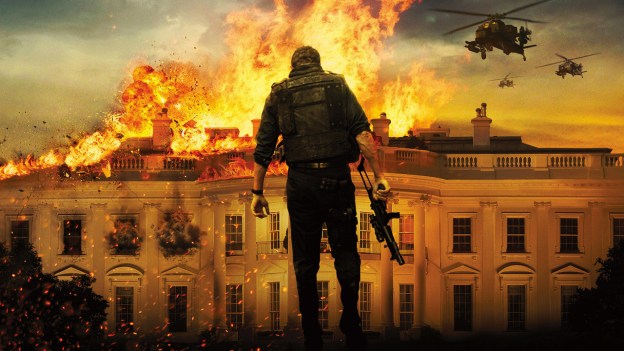 The premise of Olympus Has Fallen, the new action thriller from Training Day director Antoine Fuqua, is relatively simple: terrorists take over the White House and hold the U.S. President (played by Aaron Eckhart) hostage, and only a former Secret Service agent (Gerard Butler) trapped inside the building can save the day.
The premise of Olympus Has Fallen, the new action thriller from Training Day director Antoine Fuqua, is relatively simple: terrorists take over the White House and hold the U.S. President (played by Aaron Eckhart) hostage, and only a former Secret Service agent (Gerard Butler) trapped inside the building can save the day.

Digital Trends spoke with Fuqua, the cast of Olympus Has Fallen, and the film’s writers to learn more about the cinematic siege on the White House portrayed in the movie, how it was filmed, and where the line between fiction and reality falls in this gritty, tense thriller.
“I like realism,” Fuqua told Digital Trends during the press junket for Olympus Has Fallen. “I’m old-school, I guess. I like to do the homework.”
And he wasn’t the only person who had to do a considerable amount of homework to make the siege a believable sequence. Screenwriting duo Creighton Rothenberger and Katrin Benedikt put several years of research into the film’s script before Fuqua was even attached to the project, poring over books on the White House and its history, and speaking with military experts and historians.
“Obviously they don’t tell you anything about the security there, but we used our imagination about what might be there,” explained Rothenberger.
Taking kernels of information gleaned from research and then extrapolating potential siege scenarios, Rothenberger and Benedikt eventually discovered that that their blend of cold, hard facts and imaginative leaps in logic was closer to reality than they expected going into the project.
“When we were in preproduction, we met former Secret Service agents they brought in and they told us that a lot of what we guessed at and imagined was close to reality,” said Rothenberger. “They said that we guessed right about a lot of things. Once we had a scenario that the Secret Service agent told us was in the realm of plausibility, we knew it was good.”

According to Fuqua and the film’s writers, a discussion with their on-site experts revealed that the closest military bases would require at least 15 minutes to respond to an attack on the White House with a full show of force. While the building has its own considerable, on-site defenses and a series of security measures in place both on the ground and in the air at all times, that 15-minute window quickly found itself worked into the script.
The result speaks for itself, said the film’s star.

Bringing this impressive siege to the screen required more than just a viable military strategy, though. In order to portray the terrorists’ assault on 1600 Pennsylvania Avenue, a full-size replica of the White House was built in Shreveport, Louisiana, where the movie was filmed. The entrance and many of the interior rooms were recreated on one set, and a model of the building’s roof was built nearby for several scenes that required an overhead view.
Within the walls of the White House set, designers recreated individual rooms down to the smallest detail – including the “house within a house” architecture culled from the building’s real-world history.
“We knew from our research that [U.S. President Harry S.] Truman had built the new White House over the old one,” explained Rothenberger. “So we thought there were probably some spaces in there. We made it up. But the Secret Service agents told us it was true and that Amy Carter [daughter of Jimmy] used to get lost in there all the time.”
For at least one member of the cast who had experience visiting the real White House, the set made a convincing replica.

Still, no matter how close to reality the movie seems to get, Fuqua, the film’s writers, and cast all agreed one thing: the men and women in charge of preventing a siege like the one that happens in Olympus Has Fallen have the situation well under control.
“The beauty of this is, when I sat down with the guys who do know about these things, they already had these kinds of conversations,” said Fuqua. “I felt safe in what I was allowed to put on the screen, because their job is prevention. They have roundtable discussions just like we do as filmmakers and ask what could happen and how they can prevent that from happening.”
“So when they gave me information about things that could happen if we didn’t have X, Y, or Z elements in place, we took out those elements and made it happen,” he continued. “We’re in good hands with our Secret Service.”
“Olympus Has Fallen” hits theaters March 22. Look for our review on Digital Trends on Friday.



